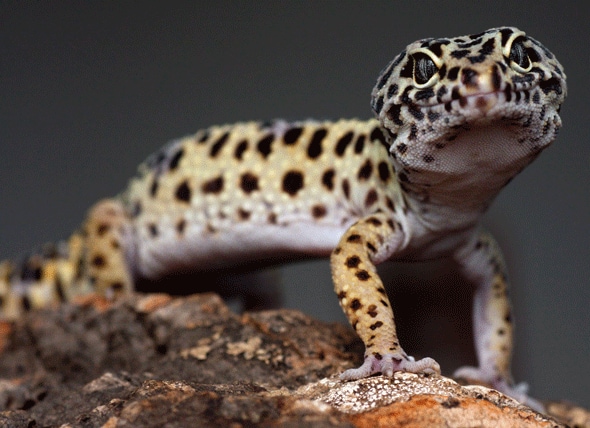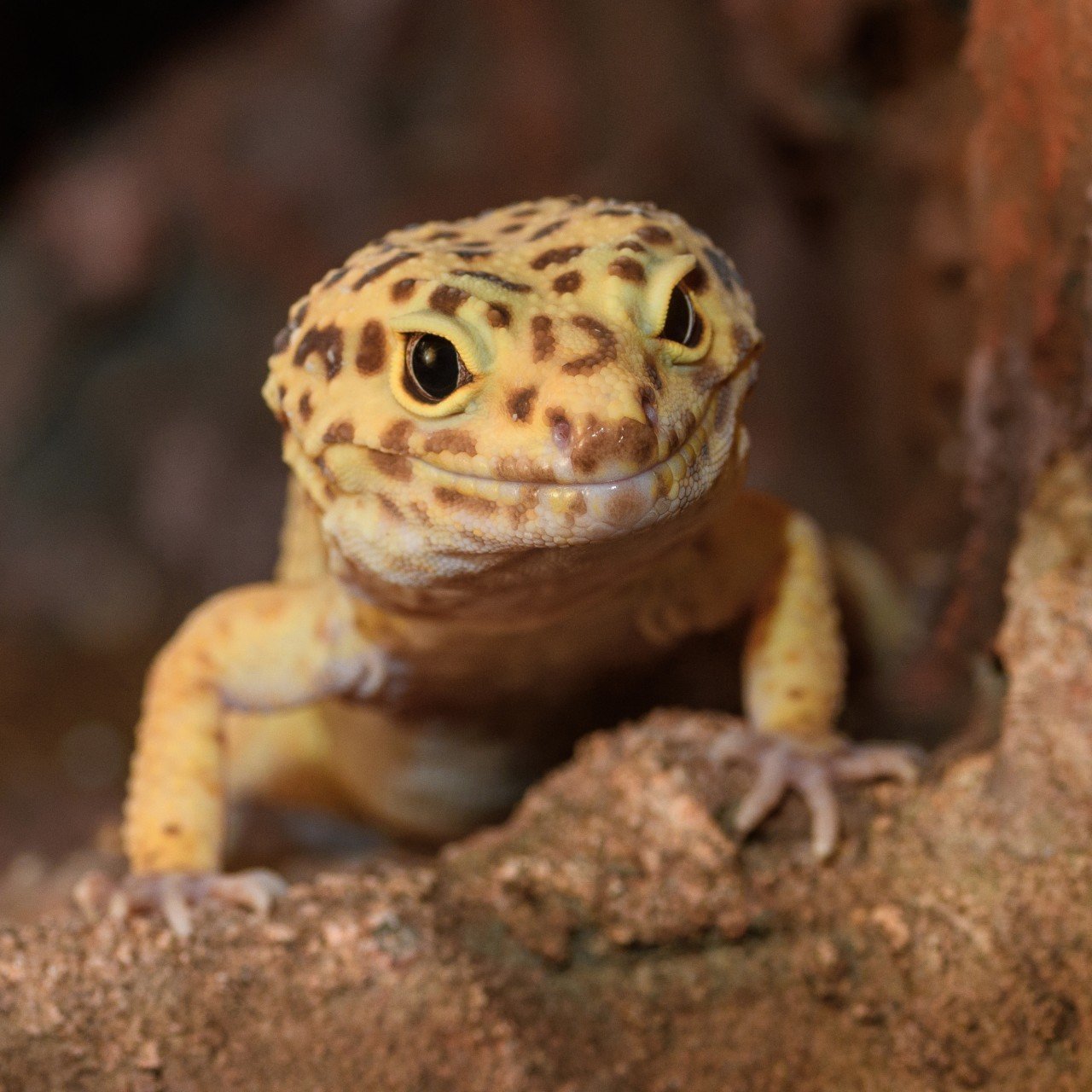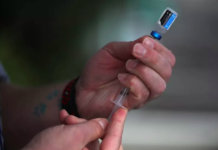Last Updated on September 5, 2022 by Fumipets
The leopard gecko is a tiny, easily handled lizard that may be found in Afghanistan, Pakistan, northwest India, and Iran. It is a beginner’s favourite reptile because of its ease of handling. When compared to other lizards, they need the least amount of attention. They have lively personalities and create fascinating motions that are entertaining to behold.
Leopard geckos are often yellow, white, and speckled with black spots, but they may be any colour. Hatchlings are initially striped, but as they get older, they begin to take on a spotted look. There are a variety of brightly coloured and intricately patterned morphs or variants. Certain colours are more favoured and expensive than others, but the usual wild-type or normal colouring is the most commonly accessible and most inexpensive of the colour variations.
Animals such as leopard geckos (affectionately known as leos) are quite simple to care for. They do not need a great deal of cage care, and they are resilient and forgiving if their living conditions are not ideal.
In general, leopard geckos are calm and simple to tame, despite the fact that they are nocturnal and like to live on the ground. They do not have sticky toe pads like other geckos, therefore they are unable to climb walls. However, unlike other geckos, they do have eyelids, which makes them unique among geckos.
Leopard geckos are not known to bite and are known to be slow in their movements. In addition to chirping and squeaking, they have been known to be very loud, particularly when hungry.
When you initially bring your leopard gecko home, you should try to socialise it by gently touching it for a few minutes. A limited amount of physical contact is OK, but avoid overdoing it, since this may cause your leopard gecko to get agitated.
Geckos communicate with one another via the use of their tails. Keeping an eye out for tail-waving is important if you have more than one leopard gecko in the same cage. It’s a slow, back-and-forth motion that takes place. It is often raised by the gecko as well. This signal indicates that a leopard gecko is feeling frightened and is ready to attack, therefore separate them as soon as possible.
Leopard geckos, like rattlesnakes, have a rattle in their tail that they use to attract prey. If you see your leopard gecko rattling the tip of its tail quickly, this indicates that it is eager to feed or to mate.
Leopard geckos, like many other lizards, have the ability to self-amputate their tails as a defensive strategy when they feel threatened.

Housing the Leopard Gecko
A 15- to 20-gallon tank is sufficient for two to three leopard geckos, but only one male should be kept per habitat, and only males and females should be kept together if you want to deal with breeding. Leopard geckos thrive in ancient fish tanks that don’t contain much water. These tanks are very ideal for breeding.
Stack half logs together to create a hiding and climbing area. Alternatively, commercial reptile caves and plain cardboard boxes are also viable alternatives. A moist hide box may aid in the shedding process.
Remove excrement from the cage using a damp cloth daily. Take everything out of the cage once a month, throw away the substrate, and thoroughly clean and disinfect the cage and all of the things in it to prevent the growth of germs in the cage.
Heat
During the day, a normal white light incandescent heat bulb may be used to create a basking area. In the evening, a red heat bulb, a blue or purple heat bulb, or a ceramic heat emitter may be used to complement the existing heat source.
The heating pads that come with your gecko’s tank are excellent for heating, but they may not be the most efficient for controlling the temperature of your gecko’s tank. The usage of an under-tank heating pad may result in burns if your gecko crawls down to the tank’s glass surface. Never utilise pebbles that are too hot.
Reptiles, being cold-blooded animals, must control their own body temperature in order to survive. Reptiles like a temperature range or thermal gradient, which allows them to regulate the temperature of their bodies. Provide a midday basking area with a temperature of 88 degrees Fahrenheit (31 degrees Celsius) and a thermal gradient of about 75 degrees Fahrenheit (around 24 Celsius). The temperature may dip to a range of 70 to 75 degrees Fahrenheit throughout the night (21 to 24 Celsius). Make certain that your gecko is not exposed to any draughts and that the tank is not placed near to a window or a closed door.
Light
Leopard geckos are nocturnal creatures that are most active at night and do not need a great deal of ultraviolet illumination. These animals are also active in the wild during dawn and sunset, when there is little sunshine, and they get UV radiation during those brief periods of time when there is little sunshine. Even a little quantity of UVA and UVB radiation (2 percent to 7 percent) may make a significant difference in the health of leopard geckos and may even decrease the risk of metabolic bone disease.
In order to imitate sunshine, your lizard will need incandescent lights as well as heat from a separate source. Allow them about 14 hours of “sun” each day throughout the summer. And, throughout the winter, the lizard will need about 12 hours of light each day. You may automate the cage lighting to make it easier to care for your animals by setting the lights on a timer.
Humidity
These lizards are desert lizards, which means they do not need a very humid climate to survive and thrive. In conditions when the humidity is very low (below 20 percent), the gecko may have difficulty shedding its skin. Maintain a humidity level of about 30 percent to 40 percent, which is comparable to the humidity level in your house. To keep the atmosphere dry, you may utilise a standard screen top in conjunction with a heat source. Purchase a hygrometer or humidity gauge for the cage in order to monitor the humidity level.

Substrate
Leopard geckos should not be maintained on a sand substrate, even if the sand is calcium sand, while they are young. It is possible that they will swallow the sand and develop an intestinal obstruction. Paper is absorbent and simple to replace, and indoor/outdoor carpet is also a good choice for absorbing moisture.
Avoid using wood shavings since they may cause injury to your gecko’s delicate feet. The volatile oils in the wood shavings may be unpleasant to certain individuals. Make certain that your gecko does not swallow the substrate you are using before using it.
Nutrition and Diet
Leopard geckos are insectivores, which means they eat insects. Feed a variety of crickets, waxworms, and, in moderation, mealworms to your geckos. On rare occasions, you may be able to successfully feed a pinky mouse to an adult gecko. You may feed your gecko in an empty tank if you want to be sure that he does not swallow any substrate.
Every day, a large number of crickets must be given to the juveniles. Adults are capable of going many days without eating. The insects must be gut-loaded or given a healthy diet at least 24 hours before they are given to your pet, according to the manufacturer’s instructions. Adding a calcium/vitamin D3 supplement to the insects before feeding them to your lizard can also help to prevent parasites from developing. Fill a ziplock bag with the crickets or worms and some of the powdered supplement to accomplish this task. In a fast shake of the bag, put the bug into the tank where your lizard is now residing. Breeding stock and juveniles need the calcium and vitamin supplement at every meal, whereas adults only need it once or twice a week at the most.
Keep a small dish of fresh water available for your leopard gecko at all times for him or her. The water bowl will assist to increase the humidity in the cage, and your gecko will drink from the bowl when it becomes thirsty. You may even come across a gecko that is willingly bathing in its water dish.

Common Health Issues
The metabolic bone disease that may afflict leopard geckos is one of the most serious diseases that may occur. Geckos may get sick, much like people, if they do not receive enough calcium and vitamin D in their diet. Metabolic bone disease is a painful condition that results in abnormalities of the spine and limbs. Among the symptoms of this illness is a decreased appetite and tremors.
If you see your gecko growing armpit bubbles, don’t be concerned; they are not harmful. You should look for them because they indicate that your lizard is storing something important. These bubbles, which may include fat, vitamins, protein, calcium, and other minerals, are frequent in geckos who are overweight. Most of the time, these bubbles disappear after the lizard has returned to a healthy body weight.
Leopard geckos are also susceptible to gastroenteritis, which is caused by a bacterial infection in the digestive tract. If your gecko’s faeces are watery and its tail is shrinking, it may be suffering from gastroenteritis, which may be fatal. Although this disease has the potential to be deadly, it is curable if detected early.
Additionally, leopard geckos who are malnourished or who dwell in a cage with inadequate humidity are susceptible to developing dysecdysis, much like other lizards. Despite the fact that it seems to be dry skin, this condition makes it harder for the gecko to shed and may impair its ability to see.
Finally, leopard geckos are vulnerable to a wide range of respiratory diseases, including pneumonia, which they may get. If your leopard gecko is wheezing or producing bubbles of mucus around its nasal passages and mouth, it is likely that it is suffering from respiratory issues.
All of these diseases should be treated by a veterinarian that specialises in exotic animals, specifically reptiles.
Choosing a Leopard Gecko as a Pet
Because leopard geckos are long-lived lizards, you should make sure you are prepared to care for one for a prolonged period of time. They are easily accessible as pets, however, it is usually better to buy geckos from a trusted breeder, which may cost anywhere from $20 to $40. Rare morphs may cost upwards of $100 each. At a reptile expo or reptile exhibit near you, you may be able to locate a reputable reptile breeder to work with.
When selecting a pet, pay close attention to its tail. Ideally, it should be as broad as or broader than the distance between the gecko’s shoulders, and it should be plump and fat. Its eyes, nose, and mouth should all be clear and not runny, and its tongue should be firm. This device’s vent, which is the hole through which it urinates and defecates, should be clean and not bloated.


















